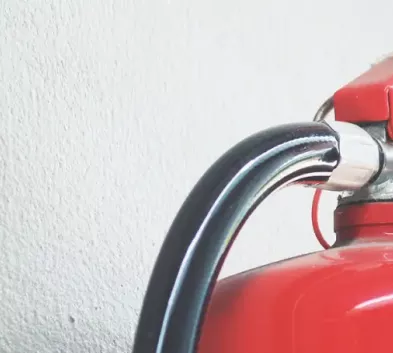

08-2020
Generally, people are more informed about motor or health insurance. In comparison, fire insurance suffers from a lack of understanding. Let us clear the air on some fire insurance myths below.
What is fire insurance and what does it cover?
Fire insurance is a type of coverage that protects property from damage caused by various incidents—not just fire alone. It offers protection against a wide range of risks including explosions, floods, lightning, hailstorms, windstorms, and even aircraft-related impacts.
Then what does fire insurance cover?
Fire insurance coverage typically includes:
- Fire – The primary coverage everyone is familiar with
- Explosion – Caused by gas or chemical reactions
- Flood – Due to heavy rain or overflowing rivers
- Lightning – Damage from electrical surges
- Hail – Damage from hailstones hitting the roof
- Windstorm – Strong winds that damage building structures
- Aircraft impact – Rare accidents involving aircraft, but still covered
- Riot – Damage resulting from civil unrest
4 fire insurance myths extinguished
1. Fire insurance only provides coverage for fire.
Contrary to what its name suggests, most fire insurance plans cover a range of incidents—from explosions to floods to aircraft impact. The type of incidents they cover vary from plan to plan, so make sure you’re signing up for a package that is relevant to your needs. For example, if your area is prone to floods, make sure that it is included within the coverage.
2. Fire insurance equals to home insurance.
Not exactly. For some insurers, there are stark differences in the coverage provided: fire insurance provides coverage for structural damages, while home insurance offers a pay-out for damages to the contents of a home. However, other insurers use both terms interchangeably by merging the coverages. Due to these blurred lines, it is important to be clear on the policy terms and coverage, or speak to an expert to understand what you’re signing up for.
3. Fire insurance only applies if there is a fire in your insured home.
In most cases, fire insurance can cover expenses incurred by a fire that did not start at your home. For example, if a fire breaks out in your neighbour’s house, chances are that soot will stain your walls and furniture. In addition, smoke odour can also be retained in the curtains. In such cases, you can depend on your insurer to cover cleaning and deodorising costs if you have a fire insurance in place.
4. Fire insurance has little importance.
Incorrect. For many families, emergency funds may not be readily available or enough to cover all the costs of an incident. These include repair costs of any damage to house structure, replacement costs of home contents, as well as expenses spent on alternative accommodation during the repair period. Investing in a fire insurance plan can prevent any home-related incident from becoming a huge financial burden.
5 Simple Steps to Choose the Right Fire Insurance for You
1. Choose the Coverage You Need
Fire insurance typically covers six main risks: fire, lightning, explosion, vehicle and animal impact, aircraft damage, and water-related incidents. Additional risks may be considered depending on your location, such as floods, storms, earthquakes, and theft—based on the risk level of your residential area.
2. Eligible Property for Insurance
Properties that can be insured include houses, townhomes, shophouses, garages, walls, fences, furniture, and decorations. Items that cannot be insured include foundations, gold, gemstones, important documents, electrical appliances, vehicles, and trees.
3. Calculate the Sum Insured
To calculate the sum insured, use the formula: Building value + Interior assets = Total sum insured For example, if the building is worth 1.5 million baht and the interior assets are worth another 1.5 million baht, the appropriate sum insured would be 3 million baht.
4. The 70% Rule Is Crucial!
If the sum insured is equal to or more than 70% of the property’s value, you can claim 100% of the damages. If it’s less than 70%, the claim will be proportionally reduced, and you’ll have to bear part of the loss yourself. This is a key rule every homeowner should know.
5. Choose Your Payment Term
Paying for multiple years is more cost-effective than paying annually. For example, a 1-year premium may cost 1,000 baht, while a 2-year plan costs 1,750 baht (saving 250 baht), and a 3-year plan costs 2,500 baht (saving 500 baht compared to annual payments).
Why Choose Fire Insurance with MSIG?
Now that you know what fire insurance covers, the next question is: which company should you choose? MSIG is a popular choice, being part of the MS&AD Insurance Group from Japan. It holds a global credit rating of A and has over 50 years of experience in the Thai market, ensuring financial stability and reliability.
MSIG’s fire insurance offers comprehensive coverage—from fire, explosion, lightning, flood, and storm damage to interior assets and temporary accommodation during repairs.
The claims process is convenient with a 24-hour online claim system, and average compensation payouts within 15 business days.
---
Still unsure about the difference between home and fire insurance? If you have any questions, feel free to reach out to us here or find out more here.
📞 Contact MSIG today for a free consultation on the fire insurance plan that best suits your home, or learn more about what MSIG’s fire insurance covers across different plans.